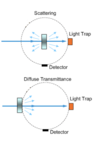Slides Flashcards
(418 cards)
Goal of The class
Gain a fundamental understanding of the structure-composition-property relationship
Types of properties
There are mechanical, electrical, thermal, and optical properties
Mechanical properties
Materials are brittle, ductile, rubbery, or hard
Brittle materials
This includes things like glass that shatter under stress
ductile materials
These are materials that are able to be bent due to dislocations in their atomic lattice. They do not return to their original shape after being bent though.
Rubbery materials
These are materials that elastically deform usually because of long chained polymers that enable these materials to deform and restructure. Polymers have the quality of rectation to act elastically
Hard materials
These are microcrystalline or nanocrystalline materials that are significant because they diffuse crack propagation very rapidly by minimizing intragranular cracking. This is commonly glass-ceramic materials.
Electrical material types
Materials are either conductors, insulators, or semiconductors
Conductive materials
This is a property of materials with loose electrons in the conductance band. They are able to transfer electrons between atoms.
Defects and impurities within the conductor scatters electrons and lower the conductivity of the material. 2D materials and crystals do not have as much deviation in preferred directions of electron transfer which makes them very good conductors.
Electron scattering length
This is a measure of the mobility of electrons in a material. Generally pure and crystalline materials (for semiconductors) have a longer scattering length which correlates to a higher conductivity.
Units are in cm2V-1s-s
Insulators
These are materials with tightly bound electrons and resist current
Semiconductors
These are materials that can elevate electrons into the conductance band under the right conditions of heat or voltage but below this critical value they act as insulators.
Optical properties
Materials are either opaque (absorbs incident light), transparent (one crystal that does not resonate with the oscillations of light or complete disorder), colored (alters the E of light), or translucent
Scattering in a material
Polycrystalline materials cause scattering as the light ray is reflected at each interface which can make them opaque or translucent
Why is glass clear
There are no reflective surfaces on the interior and the resonant frequencies of amorphous SiO2 are above and below most light. Glass is colored by metals that are able to elevate electrons with the general light wavelengths.
Thermal Properties
Materials are either conductors or insulators (dissipate phonons)
Thermal conductivity
Thermal conductivity is given by K = KL + KE
A high K means that heat is well transferred through the material.
KL is the lattice thermal conductivity (phonons) a low value indicates the material scatters phonons (scatter length =nm)
KE is the electronic thermal conductivity (ability to vibrate) a low value would indicate that electrons can flow without causing much oscillations.
A smaller crystal size enables the flow of electrons but the scattering of photons.
Phonons
These are collective vibrations of atoms along a crystalline arrangement. They have wave-particle duality having a frequency of oscillation and speed of propagation but have quantized vibrational mechanical energy and can be scattered. They transfer heat along a crystalline arrangement.
Number of oscillation modes in N atoms
There are 3N phonon modes in a crystal of N atoms based on Einstein’s model
Types of Phonons
There are optical and acoustic phonons
optical phonons move out of phase in opposite directions (like EMR) They are excited by EMR and create heat by coupling with absorbed EMR
Acoustic Phonons: the neighboring atoms move in the same direction as their neighbors (like sound waves)
Phonon Displacement types
Longitudinal displacement is when phonons move parallel to the direction of propagation
Transverse Displacement is when the phonons move in a direction perpendicular to the direction of propagation
Longitudinal Optical Phonon (LO) motion
If there is a row of phonons numerically labelled 1-n then the odd numbered phonons would move to the left when the even photons move to the right and vice versa
In comparison a longitudinal acoustic phonon would have a whole section of the lattice compress as the other section elongates/dilates
Transverse Acoustic Phonon (TA)
Within this mode of oscilation there is wave propogation out of plane (lateral motion) but it is continuous where neighbors have have simlar oscilation paths
Compared to transverse optical phonons (TO) is when neighboring atoms move in transverse directions but when one atom moves down the other moves up and vice versa.
Distinguishing Phonons
Within a crystal lattice there are 3N modes of osculation which are dependent upon the direction of 3-space being considered. Thus, in simple distinguishing you can look down a certain direction of the lattice to identify the mode of oscillation in that given direction.












